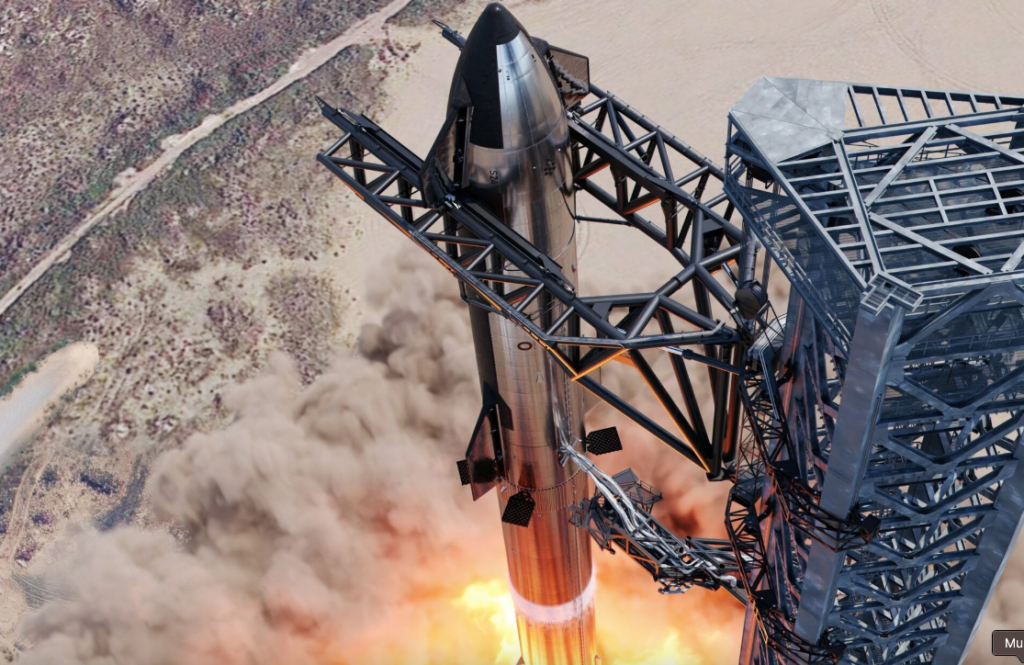|
Getting your Trinity Audio player ready...
|
SpaceX Starship rocket, touted as the most powerful rocket ever built, took off on its maiden flight on Thursday, only to end up tumbling out of control and exploding in a cloud of flaming debris. Despite the mishap, SpaceX engineers hailed the flight as a success and said that the data gathered from it would be used to improve future launches.
“Starship just experienced what we call a rapid unscheduled disassembly, or a RUD, during ascent,” said SpaceX engineer John Insprucker, serving as a launch commentator on the company’s webcast. “Now this was a development test, this was the first test flight of Starship, and the goal is to gather the data and as we said, clear the pad and get ready to go again.”
The launch of the Starship rocket had been postponed earlier in the week due to a frozen valve, but thousands of spectators including area residents, tourists, and journalists were present for Thursday’s launch from SpaceX’s “Starbase” launch facility.
The rocket, which was powered by 33 methane-fueled Raptor engines, initially climbed straight up and then tilted over onto an easterly trajectory toward the Florida Straits. However, three of the 33 Raptor engines shut down moments after liftoff, while three more shut down over the next minute and 20 seconds.
At one minute and 55 seconds after liftoff, the rocket’s exhaust plume became distinctly asymmetrical, indicating a major malfunction. The rocket soon appeared to begin precessing about its long axis before exploding.
Despite the setback, SpaceX founder Elon Musk expressed optimism and thanked the SpaceX team in a tweet. “Congrats @SpaceX team on an exciting test launch of Starship! Learned a lot for the next test launch in a few months,” he wrote.
The Federal Aviation Administration has said that it will oversee an investigation into the mishap and that the return to flight of the Starship/Super Heavy vehicle will depend on the agency determining that any system, process, or procedure related to the mishap does not affect public safety.
The launch had been closely watched, given the ambitious plans for the Starship rocket. SpaceX aims to use the rocket to ferry astronauts to the moon and even to Mars. The rocket is designed to be fully reusable, with the goal of reducing the cost of space travel.
Despite the setback, SpaceX has made significant progress with the Starship program. In December, the company launched a Starship prototype on a high-altitude test flight, which successfully landed but exploded minutes later. In February, another prototype made a successful high-altitude flight and landing, marking a major milestone for the program.
The Starship rocket is expected to eventually replace SpaceX‘s existing Falcon 9 and Falcon Heavy rockets. The company has already secured contracts with NASA to use the Starship rocket to transport astronauts to the moon as part of the agency’s Artemis program.
While Thursday’s launch did not go as planned, SpaceX engineers remain optimistic about the future of the Starship program. “We’re going to get this done. This is a tough vehicle,” said Kate Tice, a SpaceX engineer who served as a launch commentator.
Despite the challenges, SpaceX’s progress with the Starship rocket represents a significant step forward in the development of space travel. With plans to eventually transport humans to the moon and beyond, the Starship program could play a crucial role in the future of space exploration.
